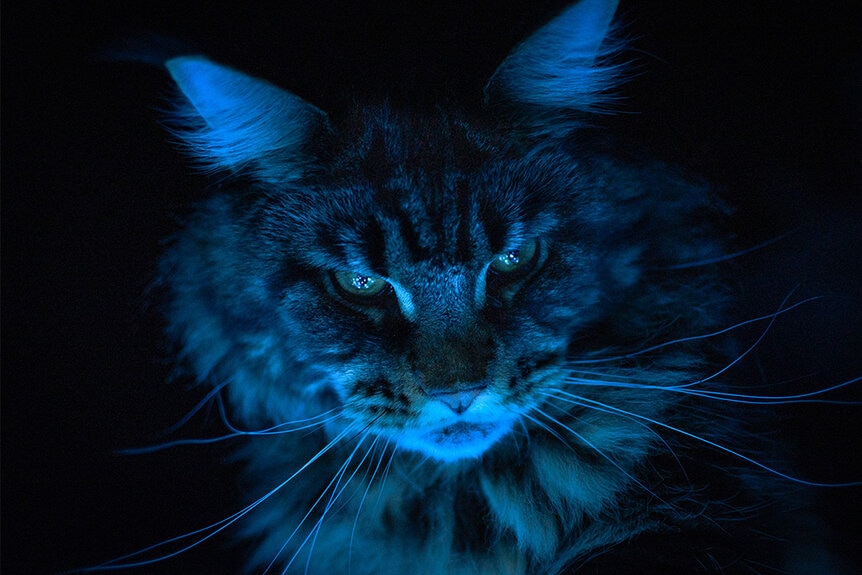Create a free profile to get unlimited access to exclusive videos, sweepstakes, and more!
More Than 100 Mammals Glow Under UV Light, Perhaps Even Your Pet
Break out the black lights!

The 2016 family animated film The Secret Life of Pets (streaming now on Peacock) follows a group of New York City pets and, as the title suggests, the secret lives they lead when their human companions are away. We can’t confirm (or deny) that animals get up to all sorts of hijinks when we’re not looking, but they do have some secrets that we’re only just unlocking.
Those secrets apparently include the ability to glow in the dark, a process more officially known as fluorescence, according to a recent study published in The Royal Society Open Science.
What is fluorescence and how does it work?
If you’re already thinking about fluorescent lights, your head is in the right place. Understanding how they work can help us grok how our housecats “glow.” A fluorescent bulb relies on a couple of physical interactions working in concert to transform electricity into visible light.
RELATED: Meet Dogxim, the World’s First Confirmed Dog-Fox Hybrid
First, the bulb is filled with low pressure mercury vapor. When the bulb is unpowered, the vapor just sits there inside the tube, but when electricity is introduced, the mercury becomes excited and emits ultraviolet (UV) light. We can’t see UV, but we can transform it, which is where the second interaction comes in.
Fluorescent bulbs are covered in a phosphor coating which absorbs UV light and re-emits in a lower frequency which we can see. That process of absorbing high-frequency light and re-emitting it in a lower frequency is what we call fluorescence. Fluorescence in animals works on the same principle; compounds on their bodies take in UV light and spit it back out, allowing them to glow.
Almost all mammals glow in the dark, some better than others
If you’ve ever shone a UV light on a scorpion (or a mushroom themed black light poster) then you’ve seen fluorescence in action. Scientists have known that certain animals glow in the dark when exposed to UV light but the idea that mammals do it is relatively new, sparked in large part by a 2020 study which demonstrated fluorescence in the platypus.
Researchers in the new study started by testing the platypus themselves to replicate the 2020 results. After confirming that they do, in fact, glow in the dark, the team got to work testing more than 100 other species. Scientists exposed preserved and unpreserved animal specimens to UV light and documented any visible glowing which occurred. They found evidence of fluorescence in fur, spines, skin, and nails from nearly every species they checked.
RELATED: Decoding the mutant dogs of Chernobyl’s exclusion zone
In general, light colored or unpigmented skin and fur exhibited more fluorescent qualities than darker pigments. That creates some interesting effects on patterned animals like zebras. The study looked at a wide selection of mammals including the short-beaked echidna, wombats, and the common house cat. All in all, they confirmed fluorescence in 125 species representing 27 mammalian orders and 79 families. While researchers found evidence of fluorescence almost across the board, it was more common and more intense in nocturnal animals.
It's unclear what benefit, if any, fluorescence provides to night-dwelling mammals, but scientists speculate it may facilitate signaling to other animals at night. That said, our cats have never used a glow in the dark cat signal to wake us in the night; usually they just slap us.
See The Secret Life of Pets for yourself, streaming now on Peacock!




























